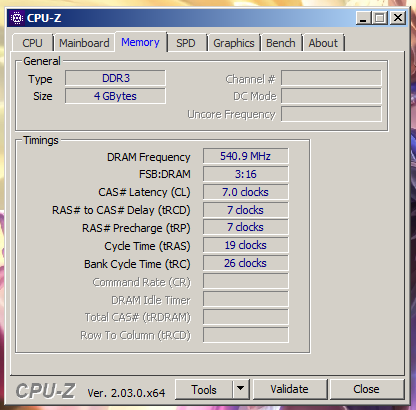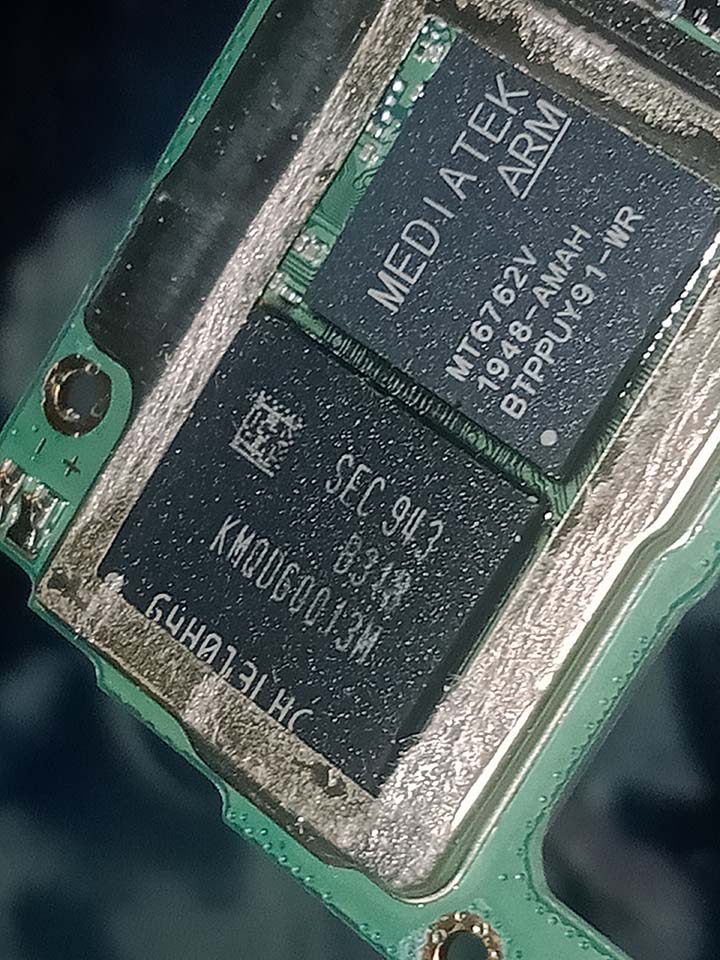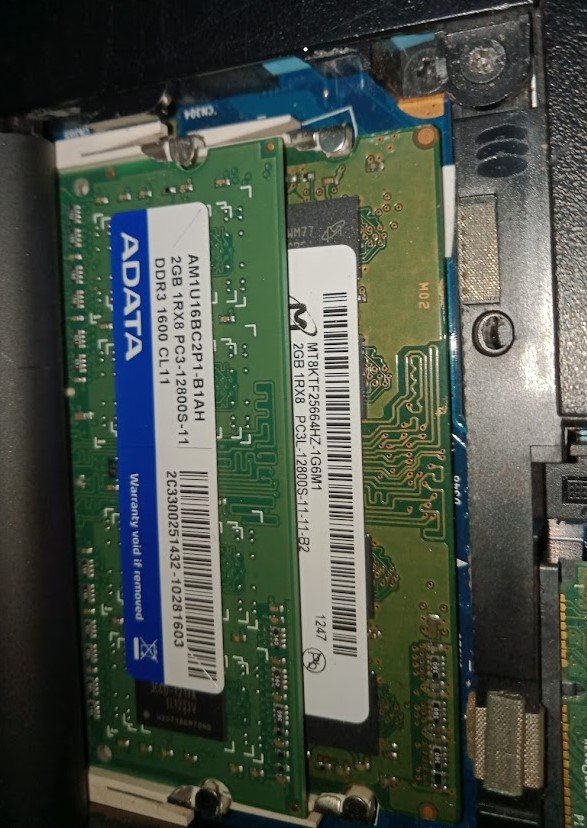Comparing: DDR3 SODIMM 1066MHz [Disk] vs Samsung KMQD60013M-B318
In this comparison, we analyze two Disks: DDR3 SODIMM 1066MHz [Disk] and Samsung KMQD60013M-B318, using synthetic benchmark tests to evaluate their overall performance. This side-by-side comparison helps users understand which hardware delivers better value, speed, and efficiency based on standardized testing. Whether you're building a new system or upgrading an existing one, this benchmark-driven evaluation offers valuable insights to guide your decision.

DDR3 SODIMM 1066MHz [Disk]
| Type: | Disks |
|---|---|
| Model: | DDR3 SODIMM 1066MHz [Disk] |
| Capacity: | 2GB |
| Interface: | DDR3 |

Samsung KMQD60013M-B318
| Type: | Disks |
|---|---|
| Model: | Samsung KMQD60013M-B318 |
| Capacity: | 32GB |
| Interface: | BGA 221 |
Specification Comparison Table
This specification comparison presents technical details of several devices or components to help you understand the key differences between each option. Use this table as a reference to determine which device best suits your needs.
| Specification | DDR3 SODIMM 1066MHz [Disk] | Samsung KMQD60013M-B318 |
|---|---|---|
| Brand | - | Samsung |
| Format | RAM Disk | eMMC 5.1 |
| Capacity | 2GB | 32GB |
| Interface | DDR3 | BGA 221 |
Submission Comparison Table
This submission comparison table displays the number and details of benchmark data submissions from various devices or components. This information helps you understand the performance based on the benchmarks that have been tested, as well as providing an overview of the consistency and popularity of the available benchmark results.
Submission Comparison Chart
This chart visualizes the benchmark scores comparison between two hardware devices based on submitted data.
Media Gallery
A collection of photos of tested hardware. These images can help you identify the physical form, model, and variant of the hardware in question. These photos are from our own documentation, and if they are not available we may not be able to document them.
About Hardware DDR3 SODIMM 1066MHz [Disk]
DDR3 SODIMM 1066MHz is a third-generation memory module with a speed of 1066MHz that is commonly used in laptops and small devices. With the SODIMM form factor, these modules are often the standard choice for mobile computing systems, serving as the main memory for running operating systems, applications, and light to medium multitasking processes.
However, in this particular experiment, two 1066MHz DDR3 SODIMM modules from Micron and ADATA (2GB capacity each) were uniquely configured as a RAMDisk, a temporary storage space that uses RAM capacity to simulate a storage drive with much higher access speeds than SSDs or HDDs.
The 1066MHz DDR3 SODIMM-based RAMDisk test was conducted on an HP 1000 1b05au laptop device, powered by an AMD E1-1200 processor. The system is equipped with a 2x2GB DDR3 SODIMM 1600MHz RAM configuration, but due to processor architecture limitations, the memory only runs in single channel mode with an effective speed of 1066MHz. The operating system used is Windows 7, and to create and manage the RAMDisk, two popular applications, SoftPerfect RAMDisk and ImDisk Virtual Disk Driver, were used. The configured RAMDisk size was 2GB, utilizing some of the available RAM capacity.
Even though the device specifications are old and have limited memory bandwidth, the RAMDisk configured in this system was still able to show excellent performance in the read and write speed benchmarks. Based on tests using CrystalDiskMark, the read speed reached 746.24 MB/s, while the write speed touched 828.18 MB/s. In a follow-up test using ATTO Disk Benchmark with a 64MB block size, the read speed increased to 1020.00 MB/s, and the write speed reached 1080.00 MB/s. These results prove that even on older systems, RAMDisk configurations are still capable of delivering very high I/O performance, far surpassing conventional storage such as HDDs or even some SSDs.
Analysis
The results show that a 1066MHz DDR3-based RAMDisk is still capable of delivering data transfer speeds on par with entry-level NVMe SSDs, even outperforming many SATA SSDs and leaving conventional HDDs far behind. This makes RAMDisks an ideal solution for temporary use such as:
- Application caching,
- Temporary file storage,
- Fast computing with high I/O,
- Software or script testing without the risk of contaminating the main file system.
Although limited to a small capacity (2GB in this test), RAMDisk is still very useful for specific needs, especially for users with more than enough RAM or older devices that want to maximize their performance.
Test on:
Device: HP 1000 1b05au
Specs:
CPU: AMD E1-1200
OS: Windows 7
RAM: 2x2GB Single Channel 2 DIMM 1066MHz (Does not support dual channel due to limitations of the CPU, currently running single channel mode and 1066MHz)
Wednesday, 26 December 2012 14:27:32 | Update: 1 month ago
About Hardware Samsung KMQD60013M-B318
Samsung KMQD60013M-B318 is a 32GB eMMC (embedded MultiMediaCard) storage module designed for mobile devices, tablets, and embedded systems with a need for reliable, efficient, and affordable internal storage. Featuring eMMC 5.1 technology, the module delivers significant improvements in read/write speed and power efficiency over previous generation eMMC versions, making it a great choice for consistently supporting operating system and application performance.
The module uses Samsung's proven NAND flash memory, providing better stability, durability and power consumption efficiency over the long term. Its compact design also allows for seamless integration in embedded systems and entry- to mid-range smartphones, without sacrificing the basic performance required for everyday needs such as opening applications, storing photos/videos, and performing system updates.
The test was conducted using a Realme C2 device, equipped with a MediaTek MT6762V SoC (Helio P22), 2GB of RAM, and 32GB of Samsung eMMC 5.1 KMQD60013M-B318 internal storage. The system runs on Android 9 with the ColorOS 6 interface, giving a real sense of how this eMMC performs in real-world use.
Benchmark results show that this storage module delivers quite responsive performance for its class. In tests using AnTuTu Benchmark v10 (Mobile) for storage tests, the Samsung KMQD60013M-B318 recorded read speeds of up to 183.7 MB/s and write speeds of 40.0 MB/s, which is sufficient to ensure a smooth user experience in running applications or moving between menus.
Meanwhile, in the Cross Platform Disk Test, the results obtained were 80.64 MB/s (read) and 12.15 MB/s (write), reflecting actual performance in cross-platform scenarios or mixed load usage. Testing with PCMark for Android - Storage 2.0 also gave numbers close to AnTuTu's results, with 182.94 MB/s for read and 13.34 MB/s for write, showing consistent performance in various synthetic tests.
Overall, the Samsung KMQD60013M-B318 32GB eMMC 5.1 is an economical yet competent internal storage solution, suitable for use in entry-level mobile devices that prioritize power efficiency, long-term reliability, and stable base performance. Whether used in smartphones, IoT devices, or other embedded systems, this module offers added value with Samsung's signature quality.
Device Test (Testbed):
Device: Realme C2
Device Specs: MediaTek MT6762V, 2GB RAM, 32GB eMMC 5.1, Android 9, ColorOS 6
Sunday, 18 February 2024 09:20:15 | Update: 1 month ago



